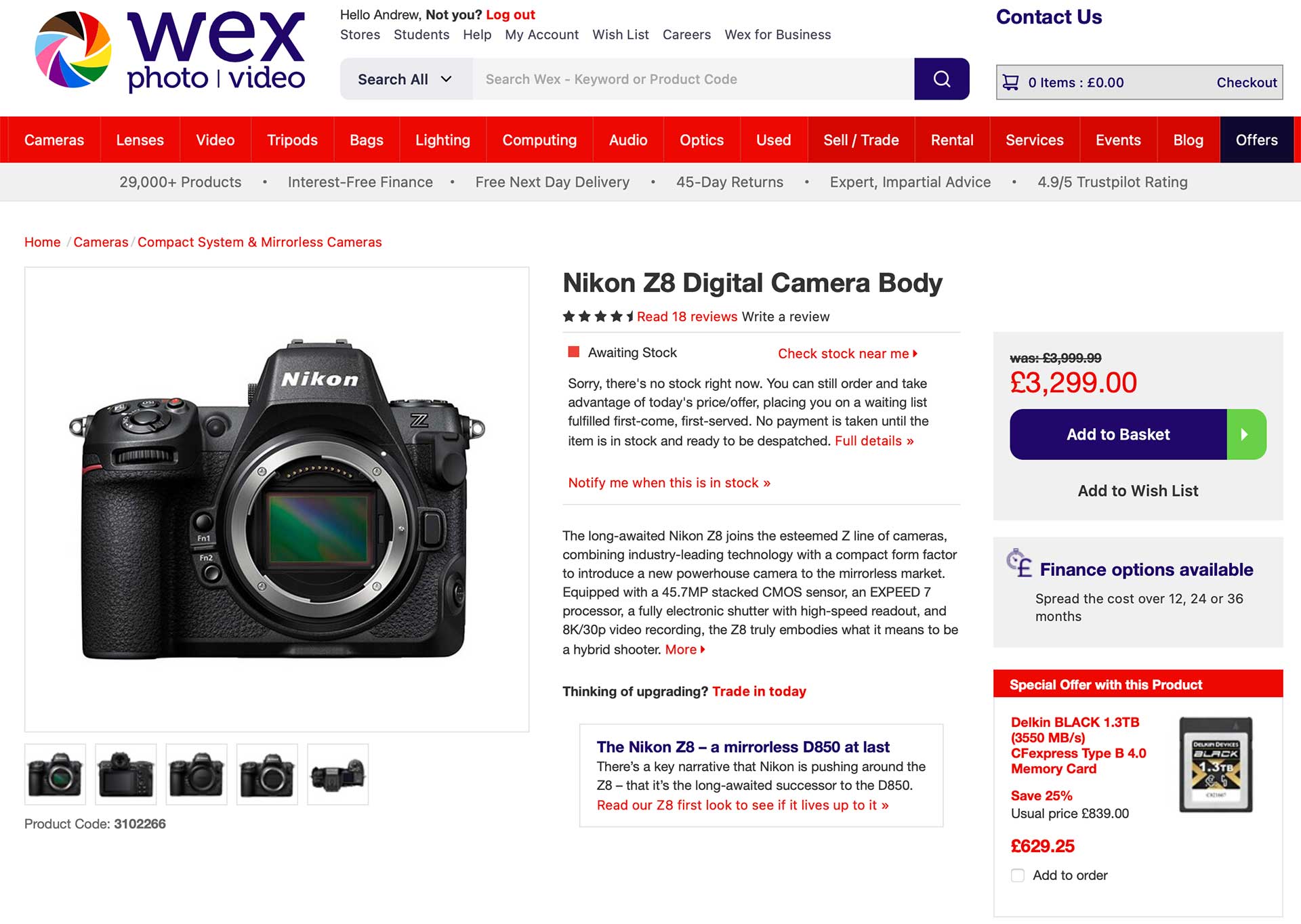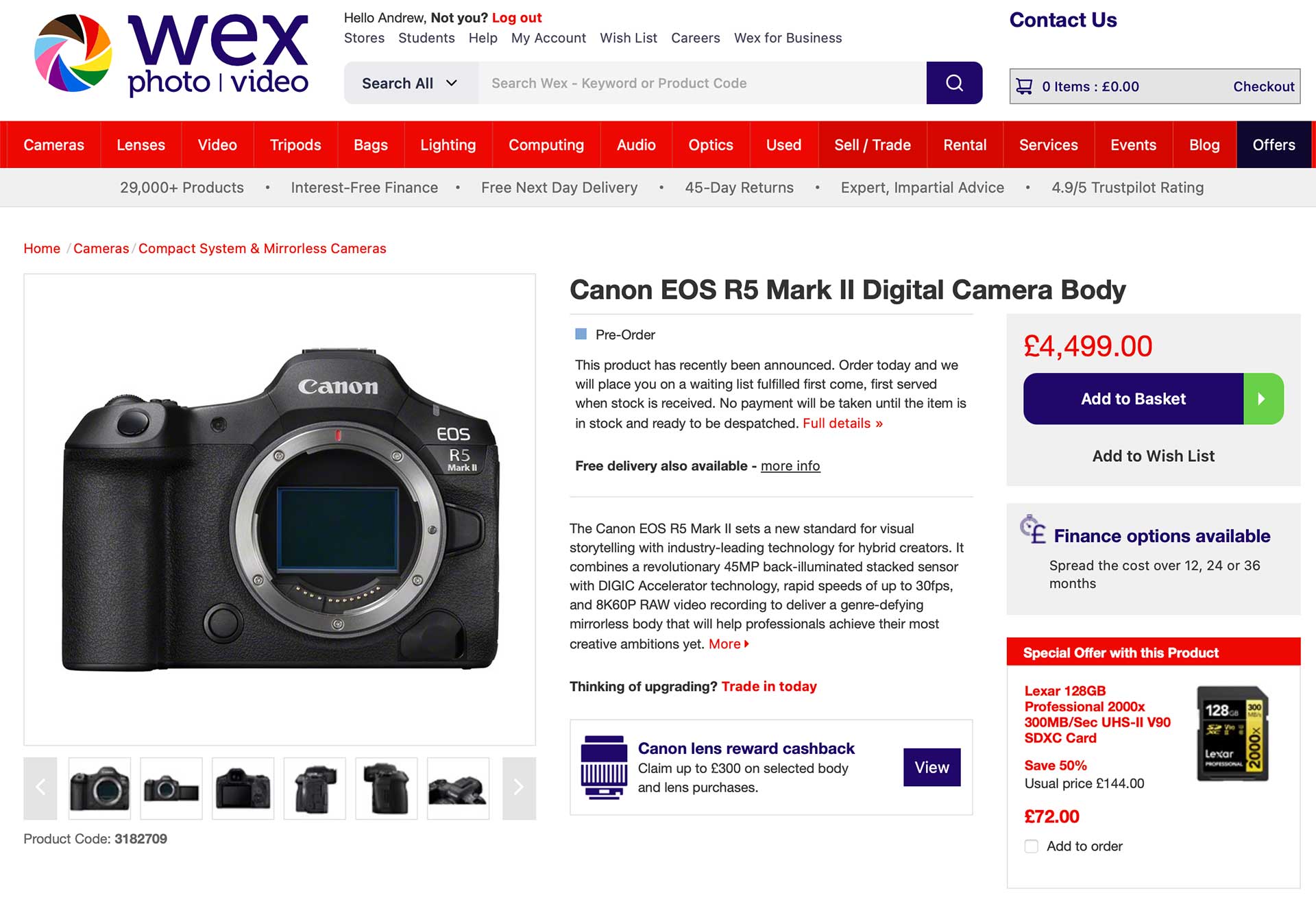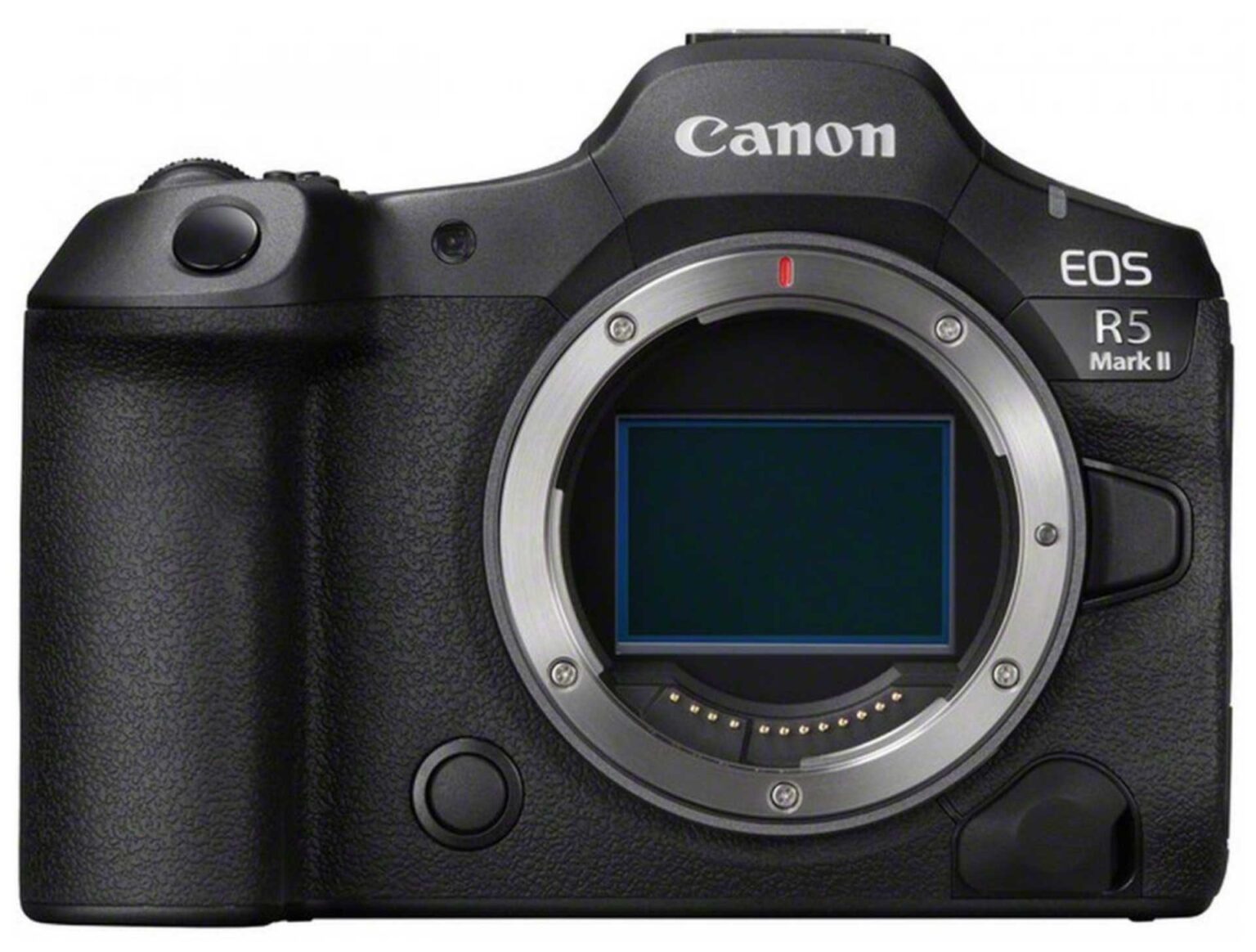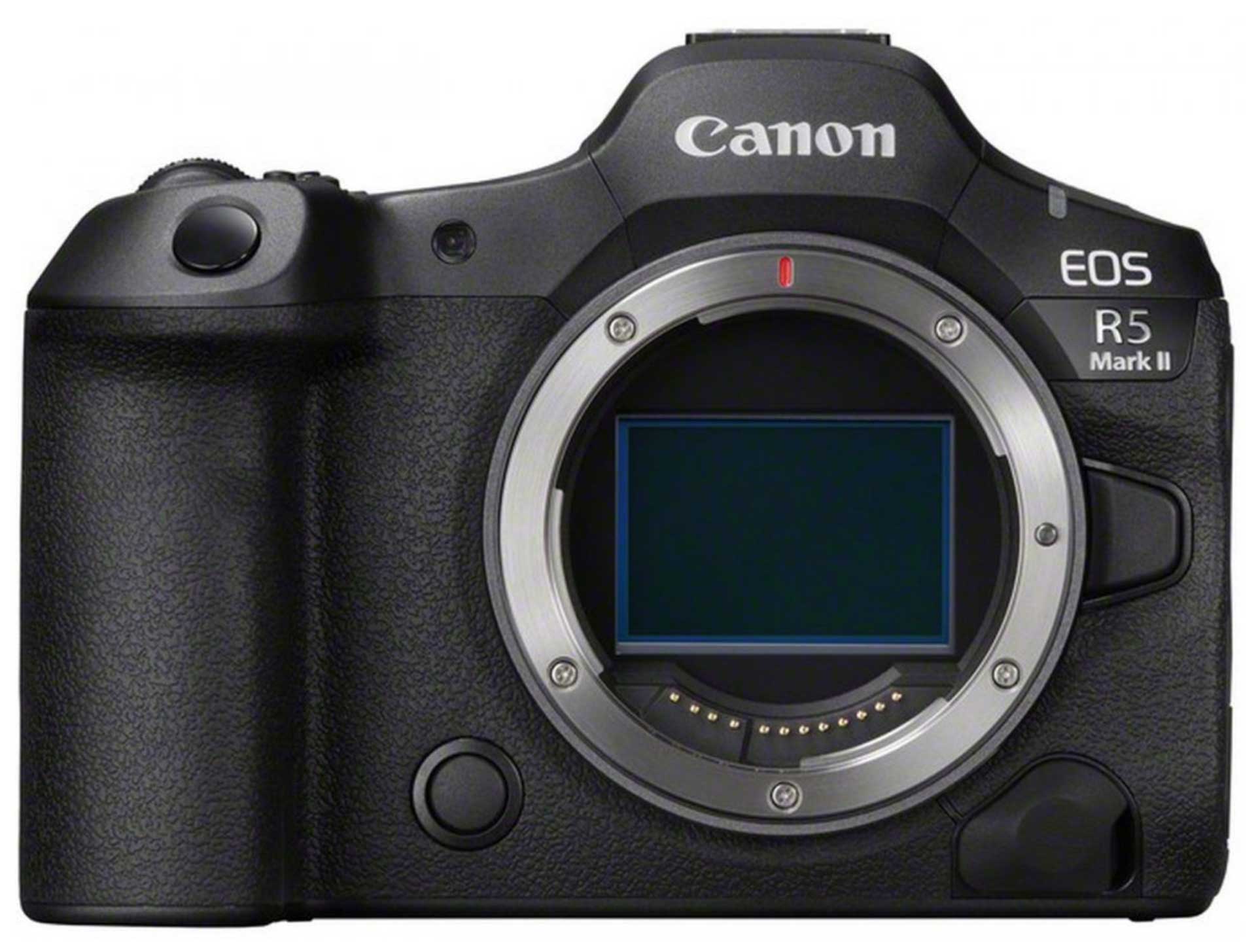
It’s been a long wait for the new R5 – four years to be exact. In this time the competition hasn’t stood still. Nikon have since acquired RED and upped their game significantly in RAW video on the Z6 III, Z8 and Z9.
The Canon EOS R5 Mark II improves on the old camera, but is it enough to stop Canon being thought of as a second best option?
To justify the price of £4499 despite a weak yen and relatively strong British pound, Canon is talking up the groundbreaking nature of the R5 Mark II but don’t be taken in – this is very much an evolutionary update. I know on good authority in fact that quite a few Canon reps are unhappy about the price, and had been expecting a bigger update. The Ai autofocus for example, is being touted as the next big thing. Ai has been part of autofocus for years. It absolutely isn’t a “groundbreaking” new thing.
The 8K 60p 12bit RAW internal recording is the other headline feature, and it produces some unmanageably large file sizes. The maximum time you can expect in this mode before overheating is just 20 minutes with the internal fan engaged and temperature limits set to high.
Everything else is pretty much as you were with the 4 year old camera. The same megapixel count, similar dynamic range, 10bit H.265 but no ProRes, no internal ND filter and a limited lens mount that doesn’t have the wider ecosystem of third party lenses or adapters that Sony E and Nikon Z does.
But the big kicker is that price, it is quite frankly nuts. The Nikon Z8, so closely resembling the Z9 in performance, with the same sensor, can currently be had brand new in the UK for £3299. How Canon thinks it will be expanding their user base at £4499 with an inferior tool vs Nikon, is yet to be explained! Elsewhere 4799 EUR and $4299 + tax are also hard to stomach for a 5 series Canon. The 5 series least we forget is meant to be enthusiast range, not top-end pro like a 1D.
There’s also the fact that a certain 2021 camera from Sony can now be had for less than the R5 Mark II if you can get one in mint condition used. I’m talking about the Sony a1 which is a true £6k flagship professional workhorse, whereas the EOS R5 Mark II is really an enthusiast’s camera which thinks it can do weddings.
The overheating issue was a big theme around the original EOS R5’s launch on EOSHD and across the web. Research showed that the limits were largely artificial or badly implemented, and could be bypassed with a battery door opening hack, allowing the R5 to go pretty much continuously in 8K/30p for over 2 hours. To this day, Canon and their engineers in Japan have not explained what the fuck they were thinking.
Before putting down another £4k on yet another Canon body, it might help to know that DPReview have already done a very early foray into this area and the times can be seen below (and at this page):
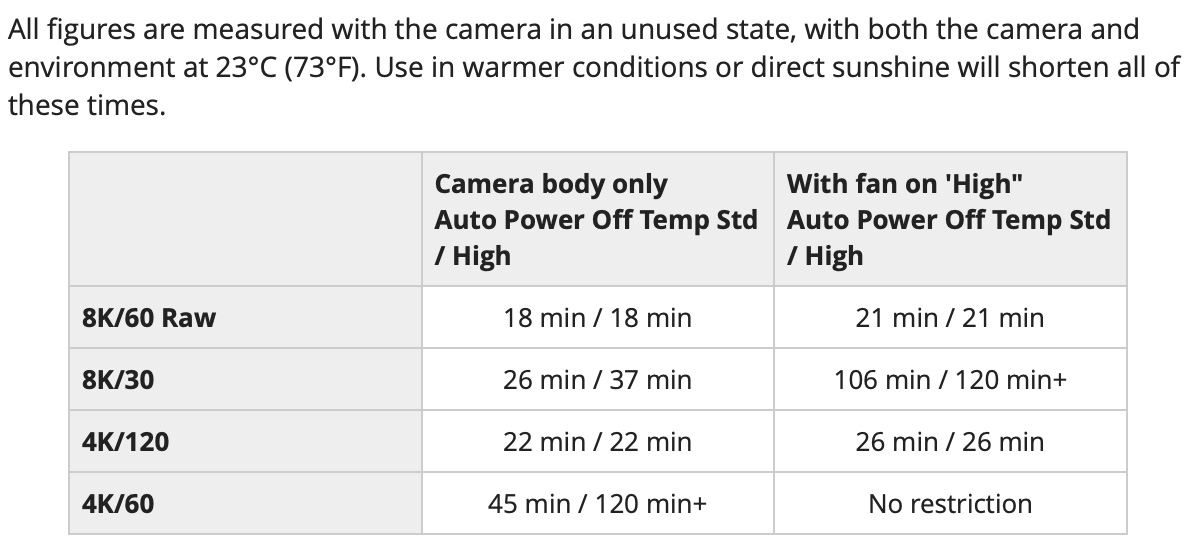
As you can see 120 min+ in 8K/30p is the same as the original model post-hack. This time, a built in fan assists in shoring up reliability. It isn’t yet known what noise (DB) the fan produces or the impact on battery life – needless to say the 8K shooting Nikon Z8 and Sony a1 don’t need active cooling in this way.
The “No restriction” in 4K/60p would imply that the sensor is pixel binning rather than oversampling from the full 8K sensor readout. Expect some moire & aliasing in this mode and in 4K/120p.
The R5 II gets Canon LOG 2 and the eye-AF ability of the EOS R3, which are welcome additions.
On the IBIS front Canon promises 8.5 stops of shake reduction, but as an ex-EOS R3 owner I hope for better IBIS performance with non-native / non-Canon lenses. It was abysmal with manual focus Leica M glass, for example. Even though you could dial the focal length into the menus like on any other modern mirrorless with in-body stabilisation, the camera just didn’t perform without a native RF lens. This is clearly some sort of cripple hammer behaviour, rather than a technical limitation as Nikon doesn’t do it, Fuji doesn’t do it, Sony doesn’t do it, and Panasonic has some of the best performing stabilisation on the market no matter what brand of lens you use it with.
A more positive step is the inclusion of a full size HDMI port.
Well there you have it – pretty much all the main talking points of the EOS R5 Mark II. If you ask me, Canon have peaked, it’s over. The technological Olympics baton is passed to Sony, and the cinema baton to Nikon. Of note, is that the Canon EOS R1 (also released today) is practically a 1D X Mark III. Have Canon run out of headroom in the CMOS sensor manufacturing plants to come up with a truly cutting edge new sensor? Are they merely repackaging old chips or getting Sony to finish them off in stacked form? Will Canon now begin to slip further and further behind as Sony grows reluctant to give their biggest rival in cameras access to cutting edge fabrication technologies, and Canon grows reluctant to pay for it? Is Canon boxed in by their insistence on having their own CMOS sensor factories, which are clearly now inferior to Sony? A quick blast from the past – Canon pioneered CMOS from the start, with the 1DS over 20 years ago at a time when Sony was committed to making CCDs. How the tables turn.
Canon’s other problem, aside from the hideous pricing strategy – is looking like the mount. Canon won’t let Sigma or others get anywhere near it. Not for full frame at any rate. There’s also a longer flange distance than Sony E and Nikon Z which make it less flexible for adapters, and that cripple hammer issue of IBIS not working well with anything that isn’t Canon badged. And by that, I don’t mean Canon FD! The native RF range isn’t very satisfying – the prices are either too high, or the lens too rubbish. 90% of the range is too clinical, too sterile and lacking in character. The weight and bulk has overall gone up since even Canon’s EF era. Mirrorless was not supposed to be heavier and clunkier than the DSLR systems they replaced.
So you have to wonder when you look at your local camera store (especially in this climate), do you get more camera for significantly more money with Canon? The answer has to be an affirmative no.
(Stay tuned for my thoughts on the Canon EOS R1 tomorrow).
